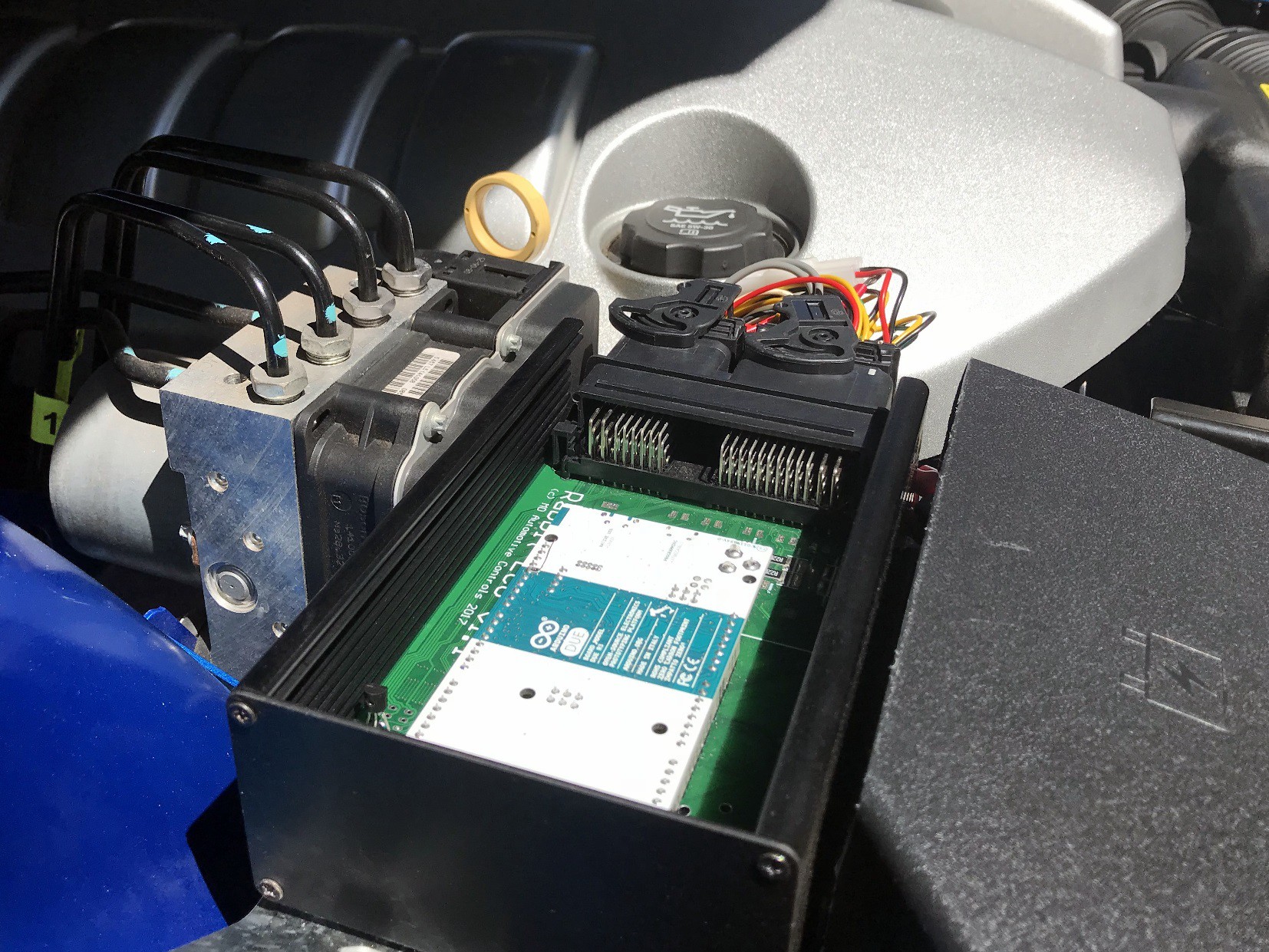The Rabbit ECU project test car is now a VE Commodore SS (Chev SS). As you can see the ECU sits in between a fuse box cutout and the ABS controller.

The Rabbit ECU runs piggy-back in this setup, having total control over fuel and timing but leaving the OEM ECU in place to control everything else.
Injection is semi-sequential because the Rabbit ECU has 4 saturated injector outputs. There are also 4 igniter outputs so the system runs wasted spark.
Here is the wiring harness that allows the Rabbit ECU to hack into the OEM system.

Getting a piggy-back ECU to run happily with a late-model OEM system is a bit tricky. CAN integration is pretty much a must to get up and running without setting off the check-engine lamp.
The Arduino Due controller used has 2 CAN 2.0 controllers on-board so connecting to the OEM 500 kbps bus is pretty straight forward.
The Rabbit ECU reads signals such as air and coolant temperature, vehicle speed, throttle and pedal position right off the periodic CAN messages.
To get full integration with the system it helps to also grab OEM tuning parameters short term and long term fuel trim over OBD CAN, along with the OEM timing angle.
The OEM ECU really throws the ignition advance around at low rpms to get a stable idle. It is better to just eavesdrop on the OEM ignition advance and use that value to get a good idle and little timing kicks when the AC comes on or there is a power steering load.
Wiring up a system like this involves making around a dozen wire splices, and adding an extra injection/ignition harness from readily available connectors.
If you're interested in reading more about hacking your OBD for a piggy-back install check out this link.
Does it work? Here is a dyno plot from an initial run, very rich and rev limited.

Next steps is to add some custom inputs and outputs to control dry nitrous, and to tune a little leaner for more power.
 matthew
matthew
Discussions
Become a Hackaday.io Member
Create an account to leave a comment. Already have an account? Log In.